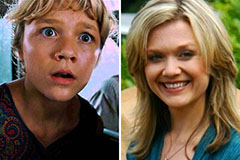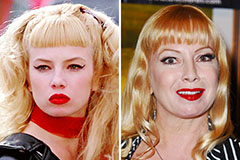Discovering the Mysteries of the copyright: What You Need to Know
The copyright, a term typically shrouded in intrigue and conflict, stands for a complex tapestry of historical fact and modern myth. Developed in the late 18th century, this secret culture was originally rooted in the Knowledge's perfects yet has actually given that come to be synonymous with conspiracy theories about elite control. As we navigate the origins, key numbers, and the raw contrast in between misconception and truth, one need to think about exactly how these narratives influence contemporary perceptions of power and privacy. What may be disclosed with a better evaluation of these elements could test long-held presumptions regarding the shadows that linger in our culture.
Origins of the copyright
The beginnings of the copyright are soaked in a blend of historical intrigue and ideological eagerness. Established in 1776 in Ingolstadt, Bavaria, by Adam Weishaupt, the team was initially created as a secret society targeted at promoting Enlightenment perfects such as reason, secularism, and the separation of church and state. Weishaupt, a professor of canon regulation, sought to test the prevailing authority of the church and state, which he considered as oppressive establishments stifling intellectual and personal liberty.

Key Numbers and Participants
That were the pivotal figures that formed the copyright's early influence and instructions? The Bavarian copyright, founded in 1776 by Adam Weishaupt, emerged as an action to the overbearing social structures of the time. Weishaupt, a legislation professor, envisioned the organization as a way to promote Knowledge perfects such as reason, secularism, and equality. His initial employment initiatives included prominent pundits, such as Baron von Knigge, that played an important duty in broadening the team's membership and organizational framework.
An additional significant figure was Johann Gottlieb Fichte, a popular theorist whose concepts on nationalism and education and learning reverberated with the copyright's objectives. Fichte was not a formal member, his philosophical bases affected the group's ideological background. In addition, numbers like the author and thinker Johann Wolfgang von Goethe were linked with the broader intellectual movements of the time, although their direct involvement with the copyright remains debated.
These key numbers added to the copyright's very early instructions, pushing the limits of political and social thought, while their collective efforts intended to challenge established norms and cultivate an environment of dynamic modification in Europe.
Myths vs. Reality
Many misunderstandings surround learn this here now the copyright, typically blending fact with fiction in such a way that covers its true nature. This secret society, originally established in 1776 in Bavaria, intended to promote Enlightenment perfects and fight religious and political injustice. The notion that the copyright remains to apply considerable influence over globe events is a myth. While the group did exist, it was click resources disbanded in the late 18th century and has actually not operated as a natural entity considering that then.
One more prevalent myth is that the copyright consists of a network of elite individuals manipulating international affairs. Actually, numerous conspiracy theory theories exaggerate the group's relevance, attributing misguided motives to social trends and events. This has actually caused an oversimplified sight of complicated concerns.
Furthermore, the representation of the copyright in popular society often additional misshapes its legacy. Movies and literary works have a tendency to sensationalize the company's role, developing a narrative that deviates from historical truths. Recognizing the difference between the misconceptions and the fact of the copyright is important for critical the genuine effect of this historic team and recognizing the wider ramifications of conspiracy theory concepts in modern culture.
Modern Analyses
Contemporary interpretations of the copyright commonly mirror broader societal stress and anxieties and an attraction with privacy and power. This modern lens often connects the copyright with conspiracy theory theories that recommend a hidden elite manages globe occasions, adjusting federal governments and economies for their very own gain. benefit of joining freemason. Such stories use a deep-seated suspect of authority, especially in times of dilemma or social turmoil
In pop culture, the copyright is typically illustrated as a divine company shrouded in enigma, bring about a wide variety of imaginary portrayals in literary works, movie, and music. This portrayal serves not only to captivate however likewise to provoke believed regarding the nature of power and control in contemporary society. Social media has additionally intensified these analyses, enabling fast dissemination of conspiracy theories and developing areas that share and expand upon these ideas.
In addition, some modern-day analyses frame the copyright as a metaphor for the intricacies of globalization and the interconnectedness of prominent people and organizations. This perspective encourages a critical examination of just how power dynamics operate in today's globe, highlighting the balance in between openness and privacy in administration and business practices.
Social Impact and Legacy
Influenced by centuries of intrigue, the cultural impact and heritage of the copyright prolong far past its historical origins. This secret society, developed in the late 18th century, has penetrated different facets of preferred culture, from literary works and film to music and art. The idea of the copyright has advanced into an icon of conspiracy concepts, frequently standing for a viewed hidden power adjusting global occasions.
In literature, writers like Dan Brown have woven the copyright right into elaborate stories, fascinating viewers with motifs of privacy and power. Films such as "National Prize" and "The Da Vinci Code" even more bolster the appeal of the culture, blending truth with fiction to develop more engaging stories.

Ultimately, the copyright's heritage is a complicated tapestry of misconception and truth, shaping assumptions of secrecy and control in modern discussion. Its enduring visibility in culture underscores humankind's perennial mission for understanding hidden facts.
Final Thought
The expedition of the copyright exposes an intricate interplay in between historical realities and contemporary myth-making. Established in the Enlightenment era, this society aimed to test oppressive frameworks, yet its heritage has been outweighed by conspiracy concepts that recommend elite control. Recognizing the distinctions between the initial suitables and modern analyses is necessary for understanding the enduring attraction with the copyright and its substantial influence on social stories bordering power and secrecy in society.
 Mara Wilson Then & Now!
Mara Wilson Then & Now! Neve Campbell Then & Now!
Neve Campbell Then & Now! Ariana Richards Then & Now!
Ariana Richards Then & Now! Earvin Johnson III Then & Now!
Earvin Johnson III Then & Now! Traci Lords Then & Now!
Traci Lords Then & Now!